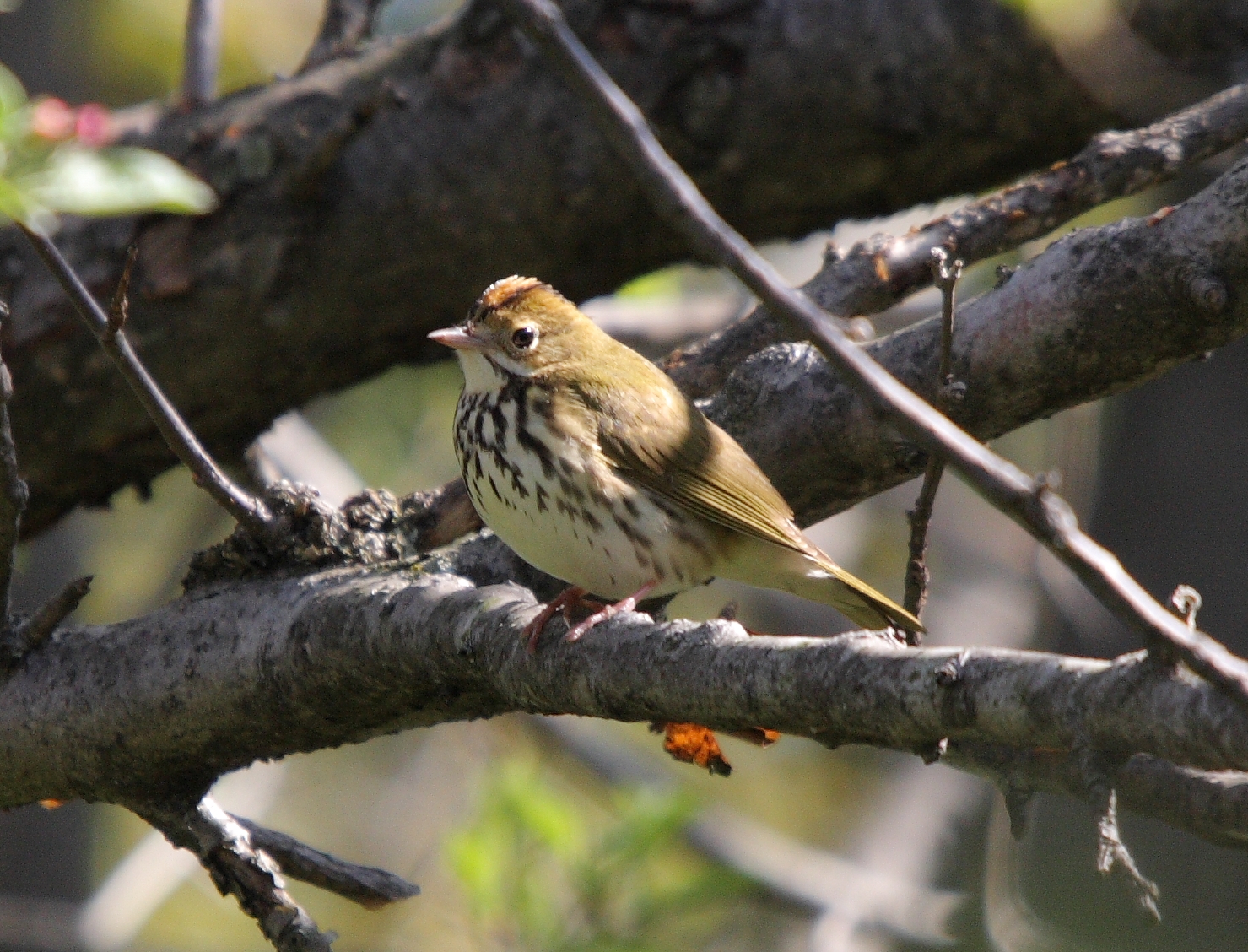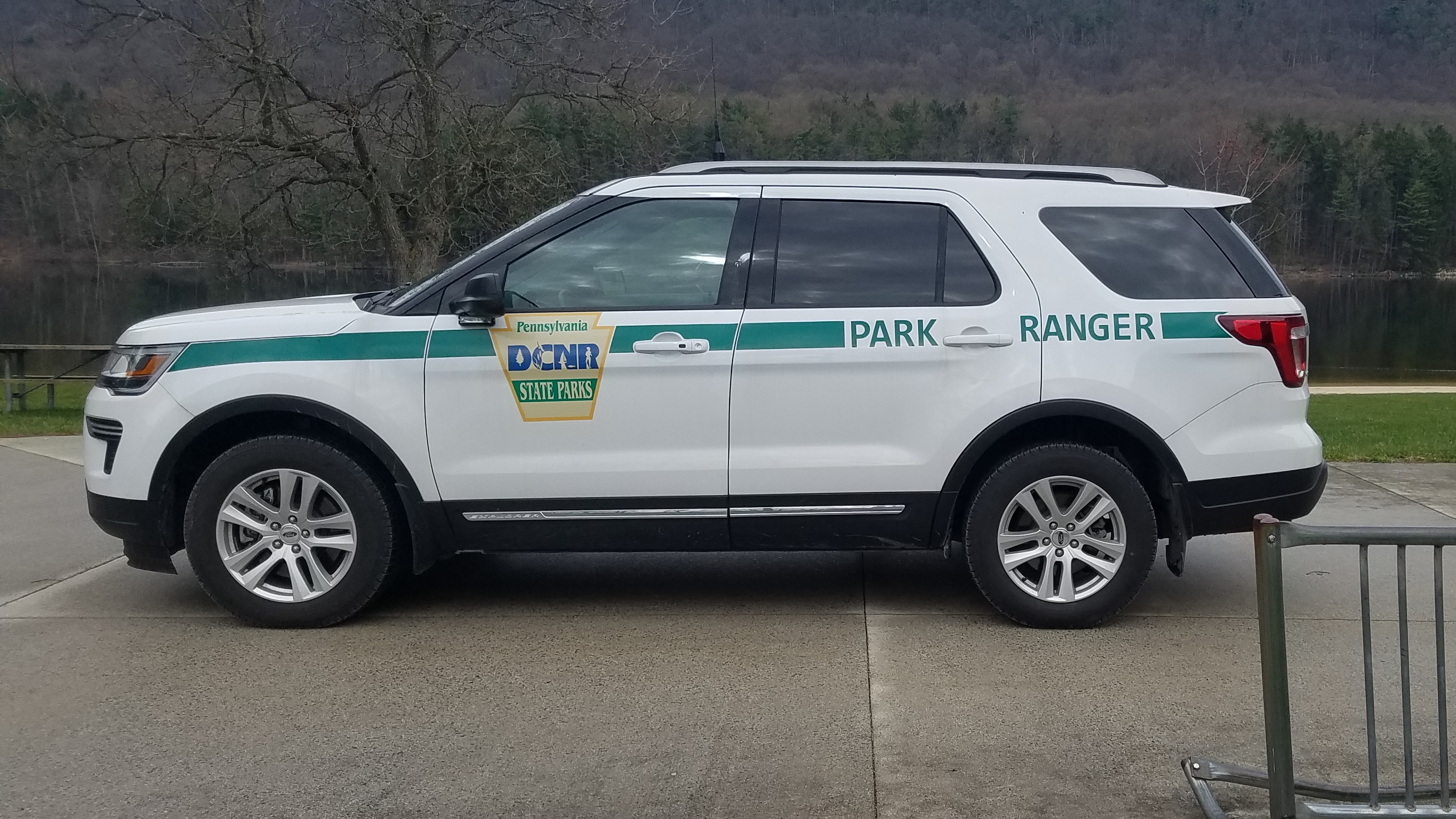|
Parker Dam (Pennsylvania)
Parker Dam State Park is a Pennsylvania state park in Huston Township, Clearfield County, Pennsylvania in the United States. The park is surrounded by Moshannon State Forest. Parker Dam State park is north of Clearfield on Pennsylvania Route 153 just off exit 111 of Interstate 80. The park was constructed during the Great Depression by the Civilian Conservation Corps; they built many of the facilities that are in use today at Parker Dam State Park. History The park takes its name from William Parker, who leased lumbering rights from John Otto. Parker built a splash dam on Laurel Run at the site of the present lake. Lumbering began as early as 1794 in Clearfield County, harvesting the white pine and hemlock which covered the mountainsides. The tall white pines fetched a high price in Baltimore for use as masts. Logs were to Baltimore by way of the Susquehanna River. Logging picked up in force during the 1850s when the Susquehanna Boom was built across the West Branch Susquehann ... [...More Info...] [...Related Items...] OR: [Wikipedia] [Google] [Baidu] |
Huston Township, Clearfield County, Pennsylvania
Huston Township is an American township which is located in Clearfield County, Pennsylvania. The population was 1,268 at the time of the 2020 census. The unincorporated village of Penfield is located in Huston Township. It is the site of the headquarters for the nearby Moshannon State Forest. Geography According to the United States Census Bureau, the township has a total area of , of which is land and (0.05%) is water. Communities *Hollywood *Hoovertown *Mill Run *Mt. Pleasant * Penfield *Tyler *Winterburn Demographics As of the census of 2000, there were 1,468 people, 607 households, and 417 families residing in the township. The population density was 23.1 people per square mile (8.9/km). There were 985 housing units at an average density of 15.5/sq mi (6.0/km). The racial makeup of the township was 99.66% White, 0.07% Asian, 0.07% Pacific Islander, and 0.20% from two or more races. There were 607 households, out of which 31.0% had children under the age of ei ... [...More Info...] [...Related Items...] OR: [Wikipedia] [Google] [Baidu] |
Susquehanna River
The Susquehanna River (; Lenape: Siskëwahane) is a major river located in the Mid-Atlantic region of the United States, overlapping between the lower Northeast and the Upland South. At long, it is the longest river on the East Coast of the United States. By watershed area, it is the 16th-largest river in the United States,Susquehanna River Trail Pennsylvania Fish and Boat Commission, accessed March 25, 2010.Susquehanna River , Green Works Radio, accessed March 25, 2010. and also the longest river in ... [...More Info...] [...Related Items...] OR: [Wikipedia] [Google] [Baidu] |
American Redstart
The American redstart (''Setophaga ruticilla'') is a New World warbler. It is unrelated to the Old World (common) redstart. Taxonomy The American redstart was described by Carl Linnaeus in 1758 in the 10th edition of his ''Systema Naturae'' under the binomial name ''Motacilla ruticilla''. The genus name ''Setophaga'' is from Ancient Greek σής : ''sēs'' (genitive σητός : sētós) "moth", and ', "eating". The specific ''ruticilla'' is New Latin for "redstart" from Latin ''rutilus'', "red", and New Latin ''cilla'', "tail". "Redstart" refers to the male's red tail, "start" being an old word for tail. Description The American redstart is a smallish warbler. It measures in total length and has a wingspan of . Its length is boosted by a relatively long tail and it is one of the lightest birds in its family. Weight is considerably less in winter than in summer. Males weigh an average of in summer but drop to in winter, while females drop even more from an average of ... [...More Info...] [...Related Items...] OR: [Wikipedia] [Google] [Baidu] |
Ovenbird
The ovenbird (''Seiurus aurocapilla'') is a small songbird of the New World warbler family (Parulidae). This migratory bird breeds in eastern North America and winters in Central America, many Caribbean islands, Florida and northern Venezuela. Taxonomy The genus ''Seiurus'' is currently treated as monotypic, containing only the ovenbird; it is genetically distinct from all other species in the family Parulidae, probably the first genus to evolve separately from the rest of the family. Before the recent genetic studies were carried out, the waterthrushes were also included in ''Seiurus''; these are now treated separately in the genus ''Parkesia'' as they are not very closely related to the ovenbird. The species name ''aurocapilla'' is a noun phrase, so the original spelling is retained, not changed according to the gender of the genus name; Linnaeus originally named it ''Motacilla aurocapilla'', and the ending is not changed to -''us'' as commonly cited in the past. Etymologica ... [...More Info...] [...Related Items...] OR: [Wikipedia] [Google] [Baidu] |
Conifer
Conifers are a group of conifer cone, cone-bearing Spermatophyte, seed plants, a subset of gymnosperms. Scientifically, they make up the phylum, division Pinophyta (), also known as Coniferophyta () or Coniferae. The division contains a single extant class (biology), class, Pinopsida. All Neontology, extant conifers are perennial plant, perennial woody plants with secondary growth. The great majority are trees, though a few are shrubs. Examples include Cedrus, cedars, Pseudotsuga, Douglas-firs, Cupressaceae, cypresses, firs, junipers, Agathis, kauri, larches, pines, Tsuga, hemlocks, Sequoioideae, redwoods, spruces, and Taxaceae, yews.Campbell, Reece, "Phylum Coniferophyta". Biology. 7th. 2005. Print. P. 595 As of 1998, the division Pinophyta was estimated to contain eight families, 68 genera, and 629 living species. Although the total number of species is relatively small, conifers are ecology, ecologically important. They are the dominant plants over large areas of land, most ... [...More Info...] [...Related Items...] OR: [Wikipedia] [Google] [Baidu] |
Raven
A raven is any of several larger-bodied bird species of the genus ''Corvus''. These species do not form a single taxonomic group within the genus. There is no consistent distinction between "crows" and "ravens", common names which are assigned to different species chiefly on the basis of their size. The largest raven species are the common raven and the thick-billed raven. Etymology The term "raven" originally referred to the common raven (''Corvus corax''), the type species of the genus ''Corvus'', which has a larger distribution than any other species of ''Corvus'', ranging over much of the Northern Hemisphere. The modern English word ''raven'' has cognates in all other Germanic languages, including Old Norse (and subsequently modern Icelandic) and Old High German , all of which descend from Proto-Germanic . Collective nouns for a group of ravens (or at least the common raven) include "rave", "treachery", "unkindness" and "conspiracy". In practice, most people use the more ... [...More Info...] [...Related Items...] OR: [Wikipedia] [Google] [Baidu] |
Warbler
Various Passeriformes (perching birds) are commonly referred to as warblers. They are not necessarily closely related to one another, but share some characteristics, such as being fairly small, vocal, and insectivorous. Sylvioid warblers These are somewhat more closely related to each other than to other warblers. They belong to a superfamily also containing Old World babblers, bulbuls, etc. * "Old World warblers", formerly all in family Sylviidae ** Leaf warblers, now in family Phylloscopidae ** Typical bush warblers, now in family Cettiidae ** Grass warblers and megalurid bush-warblers, now in family Locustellidae ** Marsh and tree warblers, now in family Acrocephalidae ** True warblers or sylviid warblers, remaining in family Sylviidae or moved into the Timaliidae ** Cisticolid warblers, family Cisticolidae * Malagasy warblers, the newly assembled family Bernieridae Passeroid warblers The two families of American warblers are part of another superfamily, which unites t ... [...More Info...] [...Related Items...] OR: [Wikipedia] [Google] [Baidu] |
Pennsylvania Department Of Conservation And Natural Resources
The Pennsylvania Department of Conservation and Natural Resources (DCNR), established on July 1, 1995, is the agency in the U.S. State of Pennsylvania responsible for maintaining and preserving the state's 124 state parks and 20 state forests; providing information on the state's natural resources; and working with communities to benefit local recreation and natural areas. The agency has its headquarters in the Rachel Carson State Office Building in Harrisburg. The department was formed when then-governor Tom Ridge split the Department of Environmental Resources (DER) into the DCNR and Department of Environmental Protection (DEP). History Current Secretary of Conservation and Natural Resources * Cindy Adams Dunn (Appointed January 2015) Past Secretaries of Conservation and Natural Resources * Ellen Ferretti (Appointed September 2013) * John Quigley (Appointed April 2009) * Michael D. DiBerardinis (Appointed January 2003) * John C. Oliver (Appointed November 1995) Education T ... [...More Info...] [...Related Items...] OR: [Wikipedia] [Google] [Baidu] |
Commonwealth Of Pennsylvania
Pennsylvania (; (Pennsylvania Dutch: )), officially the Commonwealth of Pennsylvania, is a state spanning the Mid-Atlantic, Northeastern, Appalachian, and Great Lakes regions of the United States. It borders Delaware to its southeast, Maryland to its south, West Virginia to its southwest, Ohio to its west, Lake Erie and the Canadian province of Ontario to its northwest, New York to its north, and the Delaware River and New Jersey to its east. Pennsylvania is the fifth-most populous state in the nation with over 13 million residents as of 2020. It is the 33rd-largest state by area and ranks ninth among all states in population density. The southeastern Delaware Valley metropolitan area comprises and surrounds Philadelphia, the state's largest and nation's sixth most populous city. Another 2.37 million reside in Greater Pittsburgh in the southwest, centered around Pittsburgh, the state's second-largest and Western Pennsylvania's largest city. The state's subsequent five m ... [...More Info...] [...Related Items...] OR: [Wikipedia] [Google] [Baidu] |
Rail Transport
Rail transport (also known as train transport) is a means of transport that transfers passengers and goods on wheeled vehicles running on rails, which are incorporated in tracks. In contrast to road transport, where the vehicles run on a prepared flat surface, rail vehicles ( rolling stock) are directionally guided by the tracks on which they run. Tracks usually consist of steel rails, installed on sleepers (ties) set in ballast, on which the rolling stock, usually fitted with metal wheels, moves. Other variations are also possible, such as "slab track", in which the rails are fastened to a concrete foundation resting on a prepared subsurface. Rolling stock in a rail transport system generally encounters lower frictional resistance than rubber-tyred road vehicles, so passenger and freight cars (carriages and wagons) can be coupled into longer trains. The operation is carried out by a railway company, providing transport between train stations or freight customer ... [...More Info...] [...Related Items...] OR: [Wikipedia] [Google] [Baidu] |
Sawmill
A sawmill (saw mill, saw-mill) or lumber mill is a facility where logs are cut into lumber. Modern sawmills use a motorized saw to cut logs lengthwise to make long pieces, and crosswise to length depending on standard or custom sizes (dimensional lumber). The "portable" sawmill is of simple operation. The log lies flat on a steel bed, and the motorized saw cuts the log horizontally along the length of the bed, by the operator manually pushing the saw. The most basic kind of sawmill consists of a chainsaw and a customized jig ("Alaskan sawmill"), with similar horizontal operation. Before the invention of the sawmill, boards were made in various manual ways, either rived (split) and planed, hewn, or more often hand sawn by two men with a whipsaw, one above and another in a saw pit below. The earliest known mechanical mill is the Hierapolis sawmill, a Roman water-powered stone mill at Hierapolis, Asia Minor dating back to the 3rd century AD. Other water-powered mills followe ... [...More Info...] [...Related Items...] OR: [Wikipedia] [Google] [Baidu] |






.jpg)

